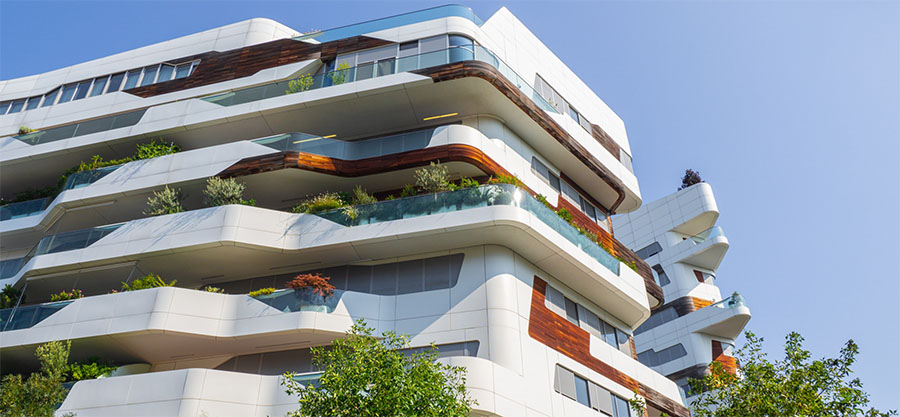Today, more and more, operators and designers talk about "Ventilated Façade", but do we really know what it is? Let’s find out together what they are, how they work and what advantages they offer compared to traditional external coating alternatives.
The term Ventilated Façade defines and groups together a set of technologies and building systems dedicated to the building envelope, usually opaque, which finds great feedback among professionals in the construction industry, both in terms of redevelopment of the existing building park, both in terms of added value (architectural and aesthetic) to new buildings, that of containing energy consumption.
"The starting point is the tension towards beauty, towards art, so that surprise, wonder, the unexpected are also part of the architectural work" - O.N.

How does the ventilated façade work?
The mechanism behind the thermo-hygrometric operation of a Ventilated Façade system is called "chimney effect", which is obtained by leaving a gap of a few centimeters between the perimeter wall and the outer lining. This phenomenon - based on the physical principle of floating forces (Archimedes) - is powered by solar radiation that, hitting the surfaces of the facade, causes a local heating of the air mass present in the cavity and then triggers a movement (natural convection) of warm air masses from the bottom up, just like in a chimney.
This creates a continuous and natural ventilation of the facade cavities, with "fresh" air that is "sucked" from the openings at the base of the facade and expelled "hot" from the openings at the top. This dynamic, which represents the peculiarity of façade systems, brings countless advantages to the thermal performance and durability of the casing..
.jpg)
- Improve living comfort
- Thermal insulation
- Sound insulation
- Aestethic and architectural enhancement of the envelope
- Protection from the elements
- High energy performance
- Elimination of thermal bridges, moulds and condensate
- Simple and time-limited maintenance.
We could continue to explain the many advantages offered by ventilated facades; however, we prefer to dwell on a particular detail: the possibility of realizing the ventilated façade completely "dry", without the aid of adhesives or other chemical connections between the various elements that compose it. This allows the creation of extremely durable and long-lasting systems, which do not require extraordinary maintenance, and are able to resist to the most disparate weather conditions for the duration of their useful life, which is comparable to that of the building (>30 years).

Surfaces for every style, taste and need
In recent years, the presence of these types of ventilated facades has grown exponentially, especially among architects. It will be for their strengths, for the structural characteristics or for the aesthetic advantages that they incorporate. The new key is: diversification and customization of coating solutions! The ability to use any material with varying sizes, thicknesses and dimensions makes the building unique. Offering from time to time a customized leather, resistant to high and low temperatures, treated in detail with colors, finishes and surfaces always different.
